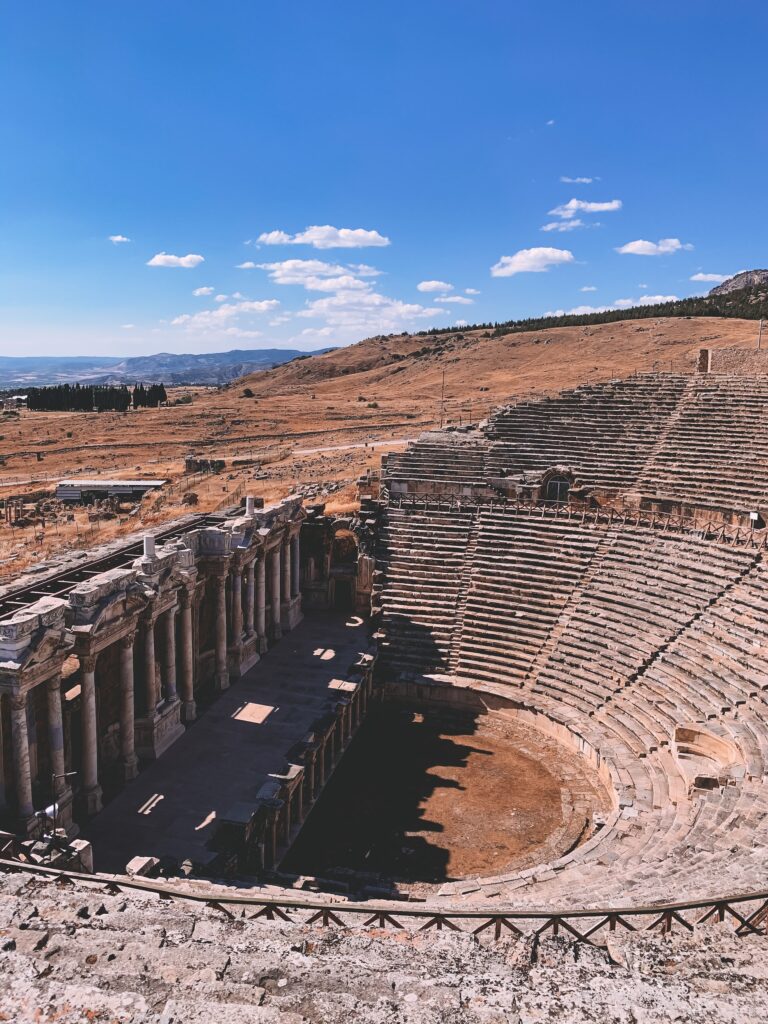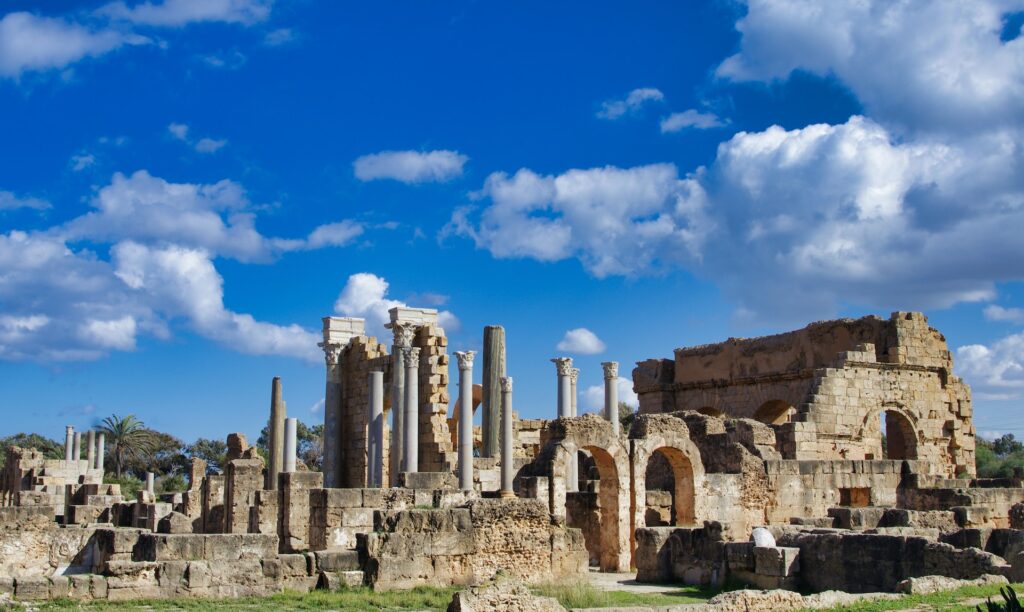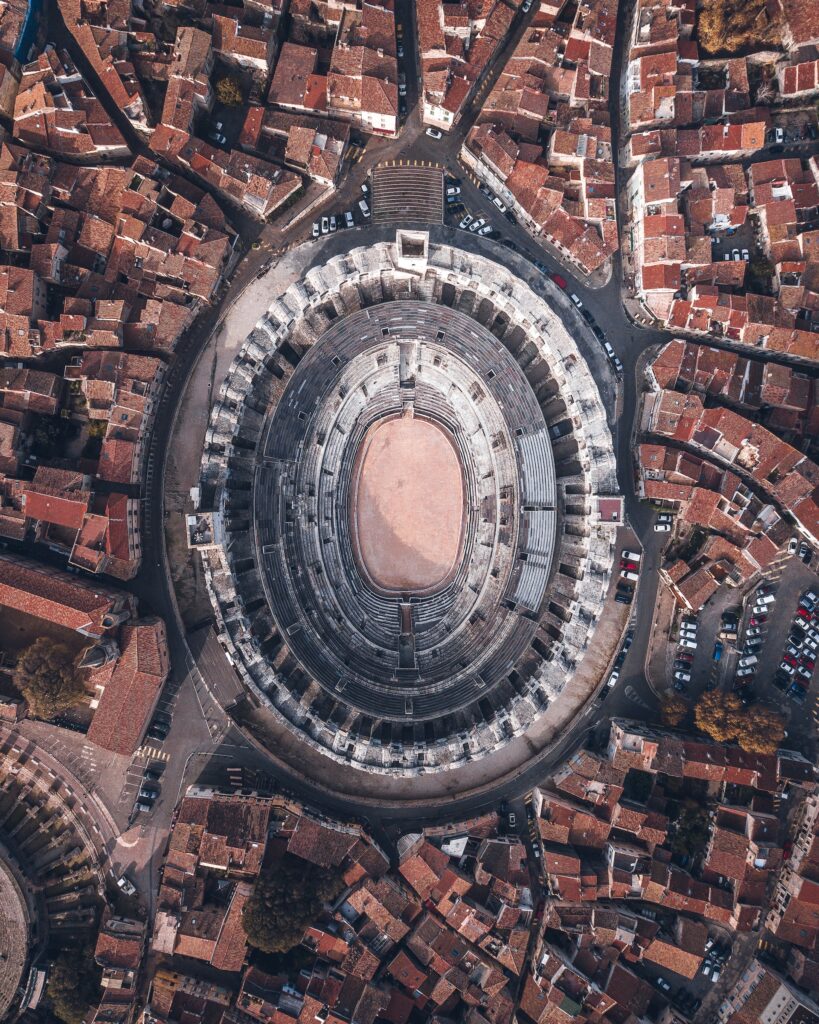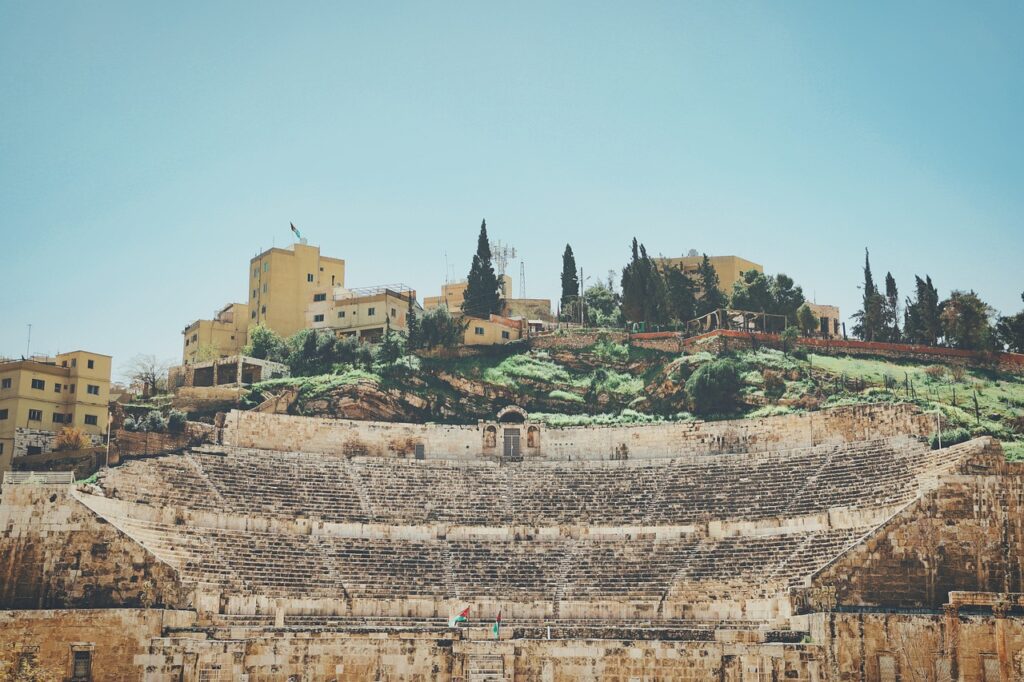If you thought you needed to visit Rome to see a Roman coliseum, you thought wrong.
While it’s true that the Colosseum (note the spelling) – the largest and most famous amphitheater in the world – was built in Rome, there were hundreds of others built all over the lands of the former Roman Empire. And dozens of them are still standing today.
From England to Spain to North Africa to Croatia, the Romans left their indelible mark on the world through architecture. And these epic theaters of antiquity certainly cannot go unnoticed.
In this article, we’ll highlight 10 places you can visit Roman coliseums outside of Rome.
Arènes de Nîmes, France

The Arènes de Nîmes is a Roman amphitheater located in the southern French city of Nîmes. Built in the 1st century AD, it is widely regarded as the best-preserved Roman coliseum in the world. And though it’s quite a bit smaller, it was modeled after the Colosseum in Rome.
During its heyday, the Arènes de Nîmes’ 24,000 seats were used for gladiatorial contests, animal hunts, and public executions. Today, it’s still used for public events such as bullfights and concerts. The Arènes de Nîmes is a testament to the engineering skills of the ancient Romans and an iconic symbol of the city of Nîmes.
Amphitheater of El Jem, Tunisia

On a desert plain in North Africa stands the amphitheater of El Jem. This Roman coliseum was built around 238 AD, not far from the ancient city of Carthage.
The Roman coliseum at El Jem is a UNESCO World Heritage site. It has three levels with arched openings separated by Corinthian columns, and it’s in very good condition considering its age and what it’s been through. The amphitheater was ravaged during the Vandal conquest of North Africa leading up to the fall of the Western Roman Empire. And it was also damaged during the 17th century Revolutions of Tunis, or Muridad War.
While it was still in use, the Roman coliseum at El Jem could host up to 35,000 spectators for gladiatorial games.
The Roman Coliseum in Trier, Germany

Not all Roman cities were south of the Alps. In fact, Trier, the site of our next Roman coliseum, is located in modern-day Germany. And because of this, it may come as a surprise that it was a major Roman city.
Not only that, it’s the oldest city in Germany.
Similar to the Colosseum in Rome, the amphitheater at Trier had a vast dungeon network beneath it where gladiators, prisoners, and exotic animals were held before being released onto the stage. Remnants of this network are still accessible.
Pula Arena, Croatia

You might not know that Croatia, the little Balkan country that hugs the Adriatic coast, was an important part of the Roman province of Dalmatia.
In fact, it was even the birthplace of one of Rome’s most famous emperors: Diocletian. And it’s home to our fourth Roman coliseum on this list, the magnificent Pula Arena.
The Pula Arena was constructed sometime in the 1st millennium AD. And it remained in use for gladiatorial games all the way up until the fall of the Western Roman Empire.
Roman Coliseum at Antalya, Turkey

The Roman coliseum in the Turkish province of Antalya is one of the most well-preserved examples of ancient architecture in the world. It’s located in the ancient city of Aspendos, originally founded by the Greeks in the 7th century BC. The coliseum was built in the 2nd century AD, and it is one of the largest amphitheaters in the world. It has a seating capacity of over 20,000 people, and it was used for public events such as gladiatorial games, chariot races, and plays.
Its construction is of stone and brick, and it’s decorated with reliefs and statues. The Aspendos amphitheater is an iconic symbol of Roman Anatolia, and it’s one of the most popular tourist destinations in modern-day Turkey.
Leptis Magna, Libya

The Romans built the city of Leptis Magna on top of a Phoenician site that had been there dating back to the early days of the Carthaginian Empire. Inside of this impressive ancient complex, which is a UNESCO World Heritage site, there is an amphitheater that was built to seat up to 16,000 spectators.
The entire ancient city complex of Leptis Magna is in good shape because it was lost shortly after the fall of the Western Roman Empire and only rediscovered in the 1900s.
However, visiting the Roman amphitheater at Leptis Magna can be tricky because it’s located in the modern nation of Libya, which has been unstable for the past decade or so.
The Verona Arena, Verona, Italy

“In fair Verona, where we lay our scene…”
Did you know that there’s an ancient Roman coliseum in Verona, Italy? The charming city, just an hour east of Milan, where William Shakespeare set his play, Romeo and Juliet is also home to one of the largest and best-preserved Roman coliseums in the world.
The Verona Arena was constructed in 30 AD under Emperor Tiberius, and it’s still in use today. In fact, it is set to be a major feature of the 2026 Milan Winter Olympics.
Roman Coliseum of Italica, Spain

The Roman Republic, under General Scipio Africanus, began its campaigns to capture the Iberian Peninsula from the Carthaginian Empire in 206 BC. Several centuries later, the Roman coliseum at Italica, located near Seville in southern Spain, would be constructed.
And Hispania would soon become an important province of Rome, and, later on, the birthplace of (at least) two Roman emperors: Hadrian and Trajan.
The Roman coliseum of Italica is in good condition for its extremely old age. Although, as can be expected, it has sustained more damage than many of the other coliseums on this list. But it’s most noteworthy for its appearance on Game of Thrones Season 8 as the setting for a meeting between Cersei Lannister and Daenerys Targaryen.
Arènes d’Arles, France

The Roman coliseum at Arles is located in southern France, close-by to the one in Nîmes. It is currently on the register of UNESCO World Heritage sites.
The stadium has sustained much more damage over the centuries than its neighbor in Nîmes. And throughout the middle ages, its interior was used as a sort of neighborhood of shanty homes. Despite this, its condition is still impressive.
Amman, Jordan

There are countless Greek and Roman architectural remains in the Arab world. From Syria and Lebanon to Israel and Egypt, the Romans were certain to leave their mark.
The Roman amphitheater in Amman, Jordan is a testament to the long-standing Roman presence in this region.
While impressive, the Amman amphitheater is much smaller than some of the others on this list. It was built into a hillside to accommodate 6,000 spectators during the 2nd century AD. And it was dedicated to the emperor Antonius Pius.
